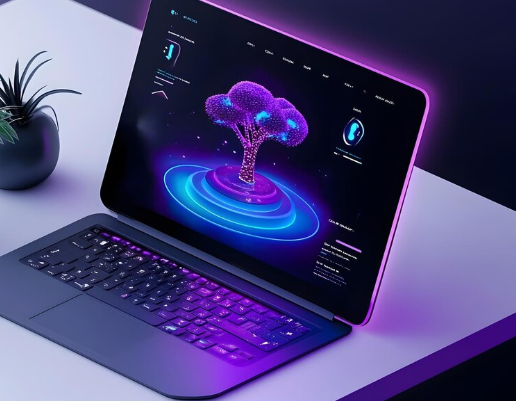No-code development has transformed the way we build and launch software. Entrepreneurs, product managers, and creatives can now spin up fully functional web apps, mobile tools, and internal systems—all without writing a single line of code.
But with this newfound accessibility comes responsibility. Security risks don’t disappear just because you’re not coding. In fact, many no-code apps fall short in fundamental areas of security—not due to flaws in the platforms themselves, but because builders often overlook critical best practices.
In this comprehensive guide, we’ll walk through the essential security best practices every no-code builder must follow to protect their users, data, and reputation.
Why No-Code Apps Still Need Security

No-code apps process real user data, handle payments, access third-party APIs, and interact with public networks—just like traditional apps. The risk vectors are the same:
- Data breaches
- API abuse
- Unauthorized access
- Injection attacks
- Misconfigured permissions
- Insecure third-party plugins
Security is not platform-dependent—it’s outcome-dependent.
Whether you’re using Webflow, Bubble, Glide, Airtable, or Imagine.bo, your app is only as secure as your setup.
1. Understand Your Platform’s Security Features
Start by learning what protections your no-code platform already offers:
| Feature | Why It Matters |
| HTTPS (SSL) | Encrypts data in transit |
| Role-based access | Restricts user access based on context |
| Built-in authentication | Prevents unauthorized entry |
| API key management | Keeps external access secure |
| Data encryption | Protects sensitive records |
| Audit logs | Tracks who did what and when |
Check your platform’s documentation. Ask support teams about compliance (e.g., SOC2, GDPR, HIPAA) and server-side protections.
2. Limit Data Collection to the Essentials
Problem: Overcollecting user data increases liability and risk.
Best practice:
- Only collect data that’s critical to your app’s function.
- Avoid unnecessary PII (Personally Identifiable Information).
- Minimize form fields and permissions.
- Be transparent with users about how data is stored and used.
3. Set Strong Permissions and Access Control
Problem: Many no-code apps grant broad access to internal data tables or workflows.
Best practice:
- Use role-based access rules for all sensitive pages or data views.
- Set user-level permissions (e.g., admin, user, guest).
- Block unauthorized actions (e.g., editing someone else’s data).
- Test access levels using dummy accounts.
4. Secure Your APIs and Webhooks
Many no-code platforms allow you to connect to APIs and set up webhooks. These are powerful—but also potential security gaps.
Best practice:
- Use environment variables for all API keys.
- Never expose API keys in the front-end.
- Validate webhook requests with headers or shared secrets.
- Rate-limit sensitive API endpoints.
5. Protect User Authentication
Problem: Weak login systems or insecure password storage is a common flaw in custom apps.
Best practice:
- Use your platform’s native auth system if secure.
- Implement 2FA for admins.
- Set session expiration timeouts.
- Avoid email-only logins without verification.
If available, integrate secure third-party auth providers like Auth0, Stytch, or Firebase Auth.
6. Monitor Logs and Activity
You can’t fix what you can’t see. Monitoring user actions and system events helps detect suspicious behavior early.
Best practice:
- Enable audit logs and user activity tracking.
- Set up alerts for unusual behavior (e.g., failed logins).
- Review logs weekly or after any app updates.
Some tools like Imagine.bo offer built-in logging features or can integrate with external monitoring tools.
7. Secure Third-Party Integrations
Many no-code projects rely on plugins or third-party tools (Stripe, Google Sheets, Zapier, etc.)
Best practice:
- Only use trusted, reviewed plugins.
- Check for active maintenance and security reviews.
- Revoke unused API tokens.
- Use scopes and permissions to limit third-party access.
8. Regularly Back Up Data
Problem: No-code creators often assume platforms auto-back up data.
Best practice:
- Export your data regularly.
- Use automated backups (some platforms offer this).
- Store backups in secure, encrypted storage (e.g., S3, Dropbox, Google Drive).
9. Run Security Reviews Before Launch
Before going live:
- Test user flows with different roles
- Check API calls for exposed credentials
- Review data visibility in all pages
- Scan forms for injection risk
Consider running a lightweight security audit with a trusted tech partner—even if your app is no-code.
10. Educate Your Team or Stakeholders
Security isn’t just technical—it’s cultural.
Best practice:
- Train co-creators on access policies and secure workflows.
- Share documentation on how sensitive features are protected.
- Limit admin access to only essential users.
Bonus: Use a Security Checklist for Every Project
Here’s a simple checklist to run through before launching any no-code project:
Final Thoughts: No-Code, High Security
No-code development is here to stay—and it’s maturing fast. As more mission-critical apps are built visually, security has to evolve alongside the tools themselves.
The good news? You don’t need to write code to protect your app. With the right best practices, you can launch with confidence—knowing your users, data, and reputation are safe.
Treat security as part of your design process. Plan for it early. Test it often.
Because in today’s digital world, security isn’t optional—it’s a competitive advantage.
🔐 Explore no-code security workflows with platforms like Imagine.bo





